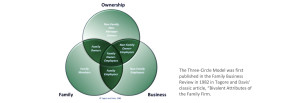The Longest Night
The sun is disappearing… we must bring it back.
Throughout parts of the globe where the seasons change people have been observing the winter solstice for millennia—imploring the sunlight to return and celebrating its readiness to do so.
I find myself writing this blog on the evening of December 21st—the winter solstice—the longest night of the year. Images of families come to mind—the elders and the young ones.
On winter solstices past, members of the Iroquois Nations went to sleep early to invite “the dreaming” where visions would instruct their lives for the following year.Iroquois Nations
The darkness of this night, open to interpretation, inspired many different traditions and rituals. Ancient Mongolians entered a mystical tent that represented the world, where their shaman undertook a spiritual journey to the North Star to clean their souls of sins. In ancient Rome the people honored the God Saturn with the weeklong feast of Saturnalia. With the return of the light many cultures celebrated the rebirth of a God, and from these traditions the holiday of Christmas was derived.
Modern astronomy has revealed that the sun does not disappear…that the cycle of the seasons is due to the earth’s axial tilt. But the psychology and emotional impact associated with the winter solstice has not changed. We shrink from the darkness, the winter cold, and gather our families and communities to call back the light and warmth.
As citizens of the earth, cycles and our responses to them are built into our DNA. Everything about our lives is cyclical, and that applies to family businesses no less than individuals. To them as well comes an inevitable time of change; a time that calls for the transition of leadership to the next generation, and the next. Here too, such a transition is open to interpretation. How will the family see this change? As an end, and frightening? As a beginning, and hopeful?
A family business, guided by the light and warmth of its incumbent leadership may struggle with their vision as that light wanes. And just as the sun when it dips below the horizon is not really gone, the wisdom and perspective of the founding generations continues to influence future ones.
Light endures.

